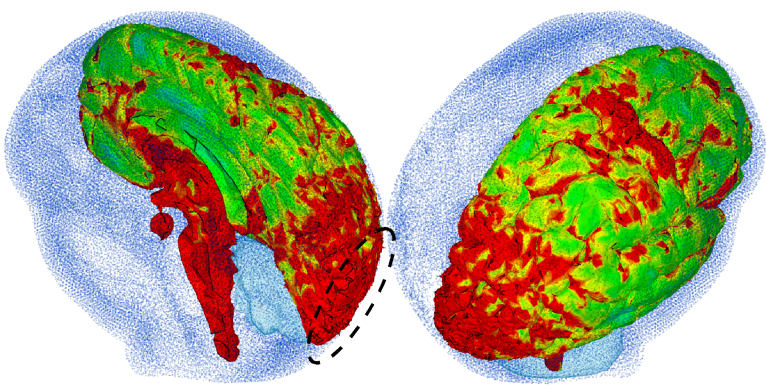
A new study led by researchers at New York Institute of Technology College of Osteopathic Medicine (NYITCOM) could change public perceptions about helmet safety.
Helmets, which are proven to prevent skull fractures and head wounds, are no doubt critical for safety. However, there is much debate about the extent to which they are capable of mitigating the effects of concussions.
The hard-shelled, heavily padded helmets used by many of today’s athletes, military personnel and industrial workers have been much adapted since early helmet models, which lacked inner padding. But do these design enhancements provide additional protection?
That’s the question that NYITCOM researchers, led by biomedical engineer and assistant professor Milan Toma, addressed in a new study published in Applied Sciences.
During a concussion, forces from the initial hit cause the brain to move rapidly back and forth (oscillate) within the skull and make contact with skull bones.
This brain-skull interaction can damage brain chemicals and tissues, especially if multiple interactions occur. Cerebrospinal fluid (CSF) – which is found in the central brain cavities and space surrounding the brain and spinal cord – cushions the brain and protects it from hitting the skull.
However, as one of Toma’s previous studies indicated, if subsequent hits occur in quick succession, the fluid loses its protective abilities, and the brain incurs more stress with each successive skull oscillation.
While no helmet can fully prevent a concussion, some researchers, including Toma, hypothesize that helmet design can play a role in limiting concussion severity. The latest advancements in helmet design have shifted away from the conventional hard-shell and extensively padded helmets.
Instead, they employ inventive materials and construction methods, with an emphasis on minimizing forces caused by head rotations during and after impacts. Experts believe that these forces are primarily responsible for concussions, as also demonstrated by Toma’s earlier studies.
Nevertheless, conventional helmets continue to be widely used across various sports disciplines, especially recreational ones like cycling and skateboarding, due to the exorbitant cost of the newer designs.
“Our new study may have implications for future helmet design and calls into question current assumptions regarding the best way to protect soldiers and athletes from concussions,” said Toma, whose research largely focuses on how fluids in the human body respond to forces.
Using 3-D models, Toma and his fellow researchers, including NYITCOM students Faiz Syed and Elisabeth Frankini, as well as research technician Kelsi Hurdle, simulated brain-skull interactions under conditions resembling a low-speed, head-on collision. This force of impact is similar to the collisions experienced by athletes in contact sports and bicycle accidents. The simulation’s conditions also accounted for CSF presence and the features found in many of today’s helmets: a hard exterior with soft inner padding.
The simulations projected multiple direct brain-skull interactions following the initial hit. In other words, the current helmet design did little to limit concussion severity. The CSF’s ability to provide natural protection diminished with each successive skull oscillation, an outcome consistent with Toma’s earlier research.
“These smaller back-and-forth motions may seem insignificant compared to the first one; however, we showed that they can still cause serious damage,” the researchers wrote. “As these subsequent head movements occur, they compromise the ability of CSF inside the skull to prevent contact between the brain and skull bones.”
Their findings also support a 2020 experimental study by another institution, which compared modern military helmets with the unpadded helmets used during World War I. Surprisingly, that study found that the historical helmets may have had an advantage in protecting from concussions when relying solely on cerebrospinal fluid.
The NYITCOM authors concluded their new research by calling for additional studies aimed at developing advanced helmet designs for better protection against concussions.
However, they make it known that using a helmet — even one with some limitations — is still better than not wearing any head protection at all.
Other co-authors include Jodan Garcia, D.P.T., of Byrdine F. Lewis College of Nursing and Health Professions at Georgia State University, and Dr. Rosalyn Chan-Akeley of the Lang Research Center at New York-Presbyterian Hospital Queens. This research project received external funding from the New York Thoroughbred Horsemen’s Association.






